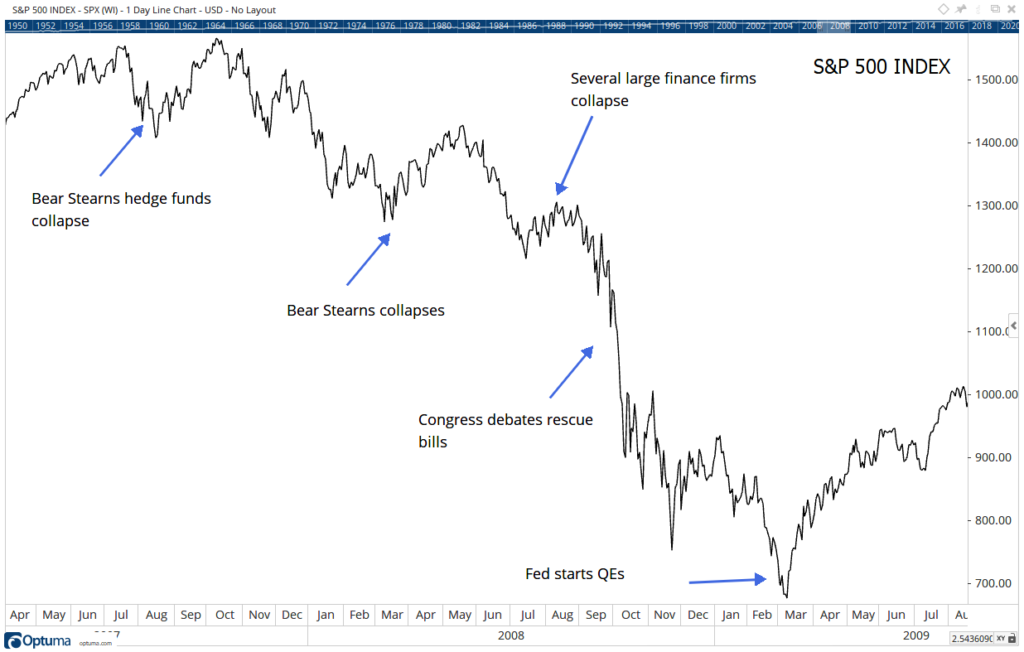Reddit was less than three years old when Bear Stearns announced that two of its hedge funds were on the verge of collapsing. That was in 2007, a time before most investors even knew what a subprime mortgage market was.
Within weeks, everyone assumed the crisis had passed.
As The Wall Street Journal reported at the time:
Bear may have prevented a wider meltdown — and kept many of the subprime bonds from plunging in value in a fire sale. Its injection of money also will help bring order to the market and pay back loans made by other big Wall Street banks to the Bear-managed hedge fund… The firm, whose move helps preserve its reputation, eventually might even make some money from the struggling investments.
The chart below shows that outlook was overly optimistic. Bear itself would collapse in less than a year. The financial crisis that revealed itself in two small hedge funds would threaten the global financial system and result in the worst bear market in stocks since the Great Depression.
Timeline of the 2008 Collapse

Source: Optuma.
Robinhood Looks Like Bear Stearns in 2007
Many of the traders involved in today’s markets weren’t active in stocks in 2008. They may have been in high school or even younger. Their sense of history may be incomplete.
Targeting GameStop may have started as a strategy to benefit from hedge funds. But it ended up revealing cracks in the financial system.
High volatility in the stock market forced Robinhood to borrow money for margin calls. Fortunately, the money was available. That part of the crisis is now being overlooked.
If Robinhood had been unable to secure $1 billion, the firm could have collapsed. That could have had a ripple effect across markets as other firms suffered losses.
For now, the market seems to have survived, just like all seemed well in July 2007. Back then, emergency loans simply delayed the day of reckoning.
In 2021, we will likely see the same scenario. The problems identified in markets last week will lead to more problems in time.
Michael Carr is a Chartered Market Technician for Banyan Hill Publishing and the Editor of One Trade, Peak Velocity Trader and Precision Profits. He teaches technical analysis and quantitative technical analysis at the New York Institute of Finance. Mr. Carr is also the former editor of the CMT Association newsletter, Technically Speaking.
Follow him on Twitter @MichaelCarrGuru.




